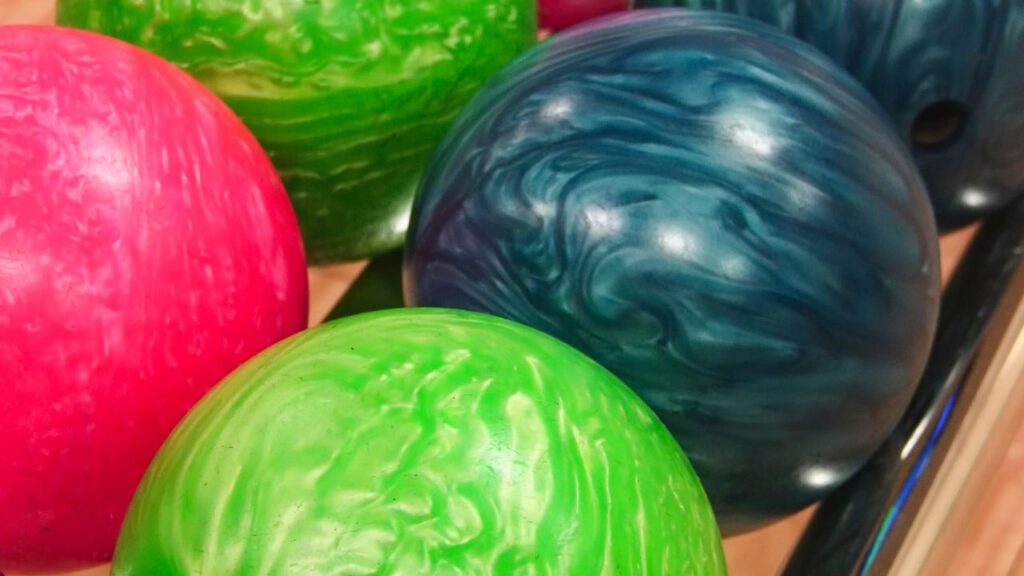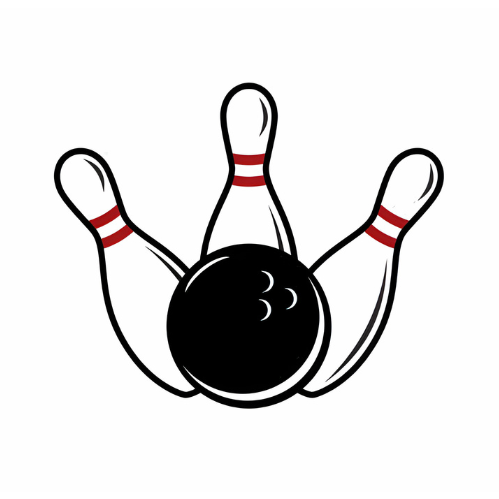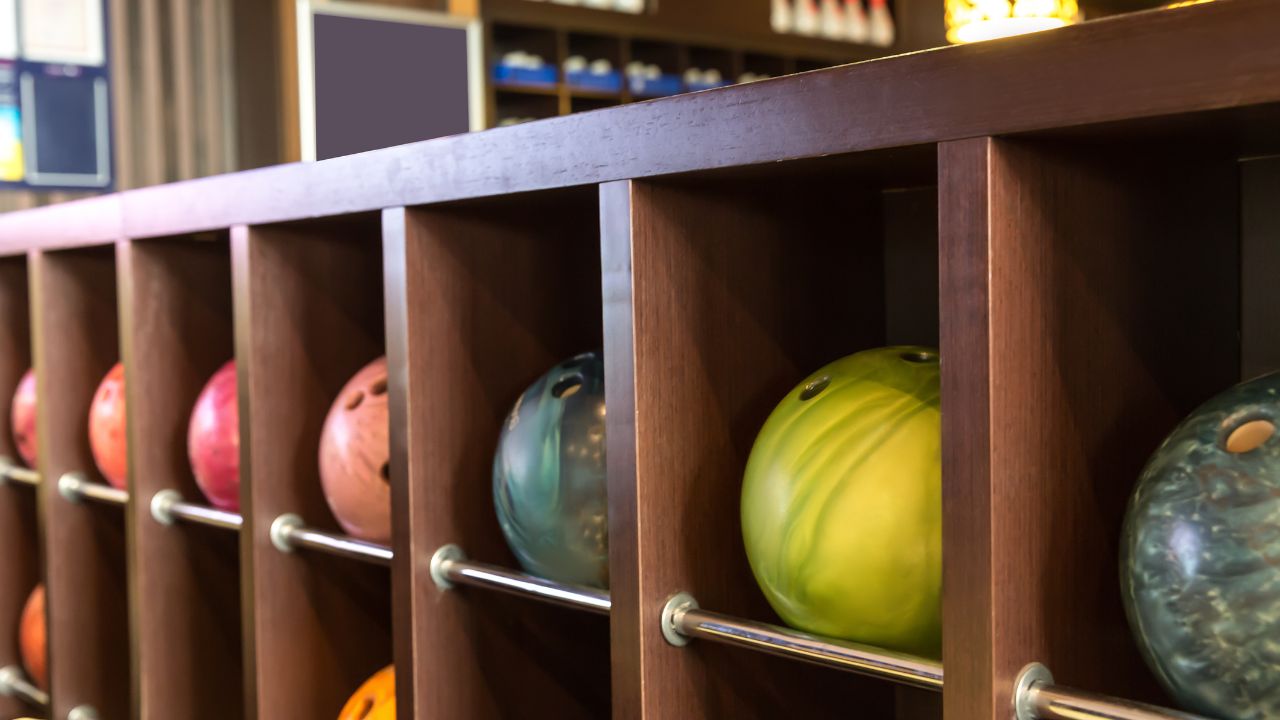If you are interested in bowling, you should also know about different types of bowling balls. Not all bowling balls work on all lanes. Firstly, you need to consider various types of lanes and their oil pattern. There are a few types of lanes, and different oil patterns are used on bowling lanes. Keeping those in mind, you need to choose a suitable bowling ball for a particular lane. Then again, you should choose a ball that matches your skill level. With thousands of options in the market, it is easy to be confused. However, once you know everything about different types of bowling balls for different oil conditions, you can easily find the perfect match for you.

5 Different Types of Bowling Balls
Bowling ball types are mainly categorized based on the cover stock material. Cover stock is the feature that makes the ball react differently on different lanes. Generally, four different types of cover stocks can be seen for bowling balls. Therefore, there are four types of bowling balls.
1. Plastic or Polyester Bowling Balls
Bowling balls made of plastic or polyester are most commonly used. House balls in bowling alleys are mostly made of plastic or polyester. These balls are typically lightweight and appropriate for bowlers of all ages. The ball’s cover stock is made of plastic or polyester. The balls’ surfaces are hard, smooth, and shiny. Because plastic bowling balls are hard, they roll easily on the lanes and do not absorb much oil. This is why plastic balls are most suitable for dry lanes. Among all the ball types, plastic balls have the least friction and hooking potential. Moreover, plastic balls roll straight and hit the pins with incredible strength. They have a predictable reaction to the lanes, which is why they are good for beginners. More advanced bowlers use these balls for straight throws or to hit spare pins.
Key Takeaway
- Plastic bowling balls are hard, smooth, and shiny
- They are affordable compared to other types of bowling balls
- Best for dry lanes
- Does not have hooking potential
- Suitable for amateur bowlers
2. Urethane Bowling Balls
Urethane bowling balls can be considered an up-gradation of plastic bowling balls. They are made of polyurethane. These balls are suitable for intermediate bowlers who want more hooking potential than plastic balls. These balls are less smooth than plastic balls, allowing more friction. Due to having more grip compared to plastic or polyester bowling balls, these balls absorb some oil from the lanes. They are most suitable for dry to medium-dry oil conditions. Urethane bowling balls provide better-hooking potential than plastic balls. This is why when new bowlers have learned to use plastic balls, then they move on to using urethane balls. Compared to plastic balls, a bowler needs to have better skills to fully control a urethane ball. However, the outcome is far more impressive than plastic balls.
Key Takeaway
- Slightly textured compared to plastic bowling balls
- Works best on dry to medium-dry lanes
- Has better-hooking potential than plastic balls
- Suitable for intermediate to advanced bowlers
3. Reactive Resin Bowling Balls
Reactive Resin is the advanced version of urethane bowling balls. Microscopic pores were introduced to urethane balls for better absorption of oils and resulting in reactive resin bowling balls. These balls are best suited to intermediate to advanced bowlers. These balls allow for more flare and hook control, making them more suitable for experienced bowlers. The textured surface of reactive resin balls increases friction. It can absorb a significant amount of oil from the lanes. It is appropriate for medium to heavy oil lanes. The motion of reactive resin bowling balls is less predictable than that of urethane or plastic bowling balls. These balls can be difficult to use due to their high hooking potential, power to hit pins, and sensitivity to oil conditions. You will need practice to successfully control these balls.
Key Takeaway
- These balls have strong friction and textured surface
- Suitable for medium to heavy oil lanes
- It has great hooking potential
- Reactive resin balls are appropriate for advanced bowlers
4. Particle Bowling Balls
Particle bowling balls are made with the latest technologies and are an updated version of reactive resin bowling balls. For this type of ball, different particles are infused with reactive resin. These particles increase friction and make the ball more advanced than the previous bowling balls. Therefore, these balls are suitable for advanced bowlers. Particle bowling balls have a textured surface. It grips the lanes and absorbs oil. These are perfect for heavy oil condition lanes due to the abrasive surface.
These balls provide incredible power and precision. Nonetheless, these balls are complicated to control and not at all suitable for beginners. Although the price of these balls is quite reasonable, they are not for beginners. Particle balls have high friction. They slide through the beginning and hit the pins with immense power in the backend. The hooking potential for these bowling balls is amazing; no wonder professionals use particle bowling balls in most cases.
Key Takeaway
- Particle balls are most suitable for heavy oil lanes
- These balls work best on heavy oil lanes
- These have extreme hooking potential
- The balls provide great power, precision, and motion
- Particle balls are suitable for advanced bowlers
5. Kids Foam Bowling Ball
Teaching children to bowl is a fantastic idea because it is a sport that they can enjoy for the rest of their lives. Of course, the weight of the bowling ball will be an issue when teaching children to bowl. Most bowling balls weigh at least six pounds. This is clearly excessive for a child who is just learning how to pick up a ball. There are many skills that young children can learn before moving on to heavier weighted balls. If you want to teach your children the game but don’t want them to use a potentially dangerous ball, you can use a heavy foam bowling ball.
The foam bowling balls will typically weigh about one pound and will assist young people or beginners in learning how to control the ball. By practicing with this foam type, even toddlers can begin to learn what they need to do with a bowling ball. Of course, the majority of foam bowling balls on the market will be brightly colored, and they will be sold with two sets of finger holes.
Key Takeaway
- The most significant advantage of the foam bowling ball is that it is safe for young people to use.
- Nothing is more devastating than destroying a child’s dream of becoming a bowler the first time they drop the ball on their foot.
- When it comes to incorporating young people into the game of bowling, this is a major issue.
- The foam bowling ball has greatly simplified the game.
Final Note
Many people also try to categorize bowling balls based on their core or weight distribution. However, that seems to be less rational as bowling ball manufacturers are always coming up with different core types. Core designs are sometimes exclusive to some brands. The experimentation on design for cores and weight distribution is perpetual. Moreover, the core makes a slight difference in the performance of a bowling ball. The majority of performance-related features are based on the cover stock. So, the core is not an ideal parameter to categorize bowling balls, but cover stock is. That being said, the 5 different types of bowling balls that we discussed are the standard categorization for any bowling ball.

